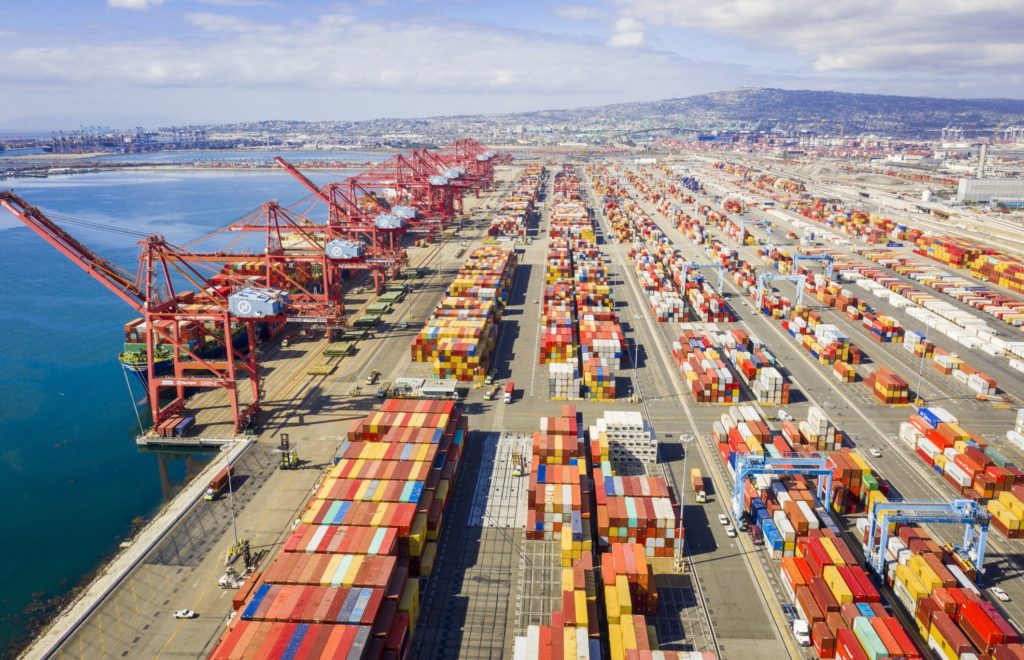Maritime shipping is the essential foundation of the global economy. United Nations statistics show that over 80% of the volume of international trade is through the sea. OECD statistics show that around 90% of the traded goods are carried over waterways. As the primary mode for transportation, maritime shipping in the 21st century is playing an irreplaceable role in terms of promoting economic growth, integration, and connectivity.
The core of this ever-vital global shipping mechanism is found in Asia. China is reportedly controlling 7 out of the 10 busiest container ports while Singapore and South Korea each have one of their own, meaning 9 of the 10 busiest container ports in the world are found in Asia.

Similar to other parts of the American supply chain, maritime shipping from Asia to the U.S. has been deeply impacted by the pandemic. Cargo shipments are stuck at major ports in California, New York, and New Jersey, where a shocking long queue of freights are floating on the ocean waiting for the next dock to become available. Meanwhile, many carriers are shipping empty carriers back to Asia due to the high cost of long waits in U.S. ports and the cost to reposition containers for inland U.S. exporters; especially agricultural exporters. Meanwhile, import prices rose due to the rising shipping fee caused by high late fees charged at ports. The issue has, therefore, evolved beyond a matter of supply chain resilience, but also a matter of trade and civil economy.
This great supply chain disruption rang the alarm in Washington as Congress worked together to address the issue by passing the bipartisan Ocean Shipping Reform Act, which was signed by President Joe Biden on June 16, 2022. This new law aims to reduce costs for American consumers and ensure that agricultural exporters are less impacted by the supply chain disruption. More specifically, it will empower the Federal Maritime Commission to investigate ocean supply chain issues during the pandemic and to require carriers to provide detailed quarterly inventory.
While it appears that actions so far have been focusing on addressing the challenges and problems emerged over the pandemic, the Biden administration’s and the U.S. Congress’ increasing concern over maritime shipping security could have significant implications for the U.S. pursuit for supply chain resilience in general. The push for securing maritime shipping could also have a great impact on the on-going U.S.-China trade and supply chain decoupling.
The maritime shipping crisis over the pandemic has again shown American dependence on the international shipping industry. While it may not be a bad thing during normal time, it could be seen as somewhat problematic by Washington given that China has a dominant presence in the international shipping industry. China is both the world’s largest shipbuilder and container maker and Chinese state-owned China Ocean Shipping (Group) Company (COSCO) is ranked fourth among the world’s 10 largest shipping companies. President Biden has already criticized foreign shipping lines for stoking inflation and suggested that the FMC should crack down on these companies. Moreover, it is reported that China is the primary destination for empty containers shipping back to Asia that reject American agricultural exports.
As the U.S. seeks more self-reliance in maritime shipping, its response to China’s heavily subsidized shipping industry and Beijing’s increasingly dominant role in maritime shipping could be an indicator of how far Washington is willing to go to pursue supply chain security.
This Spotlight was originally released with Volume 1, Issue 7 of the ICAS MAP Handbill, published on August 30, 2022.
This issue’s Spotlight was written by Yilun Zhang, ICAS Research Associate & Manager, Trade ‘n Technology Program.

Maritime Affairs Program Spotlights are a short-form written background and analysis of a specific issue related to maritime affairs, which changes with each issue. The goal of the Spotlight is to help our readers quickly and accurately understand the basic background of a vital topic in maritime affairs and how that topic relates to ongoing developments today.
There is a new Spotlight released with each issue of the ICAS Maritime Affairs Program (MAP) Handbill – a regular newsletter released the last Tuesday of every month that highlights the major news stories, research products, analyses, and events occurring in or with regard to the global maritime domain during the past month.
ICAS Maritime Affairs Handbill (online ISSN 2837-3901, print ISSN 2837-3871) is published the last Tuesday of the month throughout the year at 1919 M St NW, Suite 310, Washington, DC 20036.
The online version of ICAS Maritime Affairs Handbill can be found at chinaus-icas.org/icas-maritime-affairs-program/map-handbill/.

The Institute for China-America Studies is an independent nonprofit, nonpartisan research organization dedicated to strengthening the understanding of U.S.-China relations through expert analysis and practical policy solutions.
1919 M St. NW Suite 310,
Washington, DC 20036
icas@chinaus-icas.org
(202) 968-0595
© 2025 INSTITUTE FOR CHINA-AMERICA STUDIES. ALL RIGHTS RESERVED.